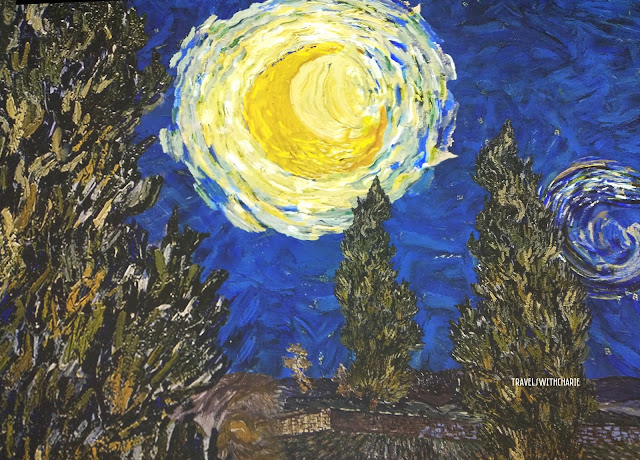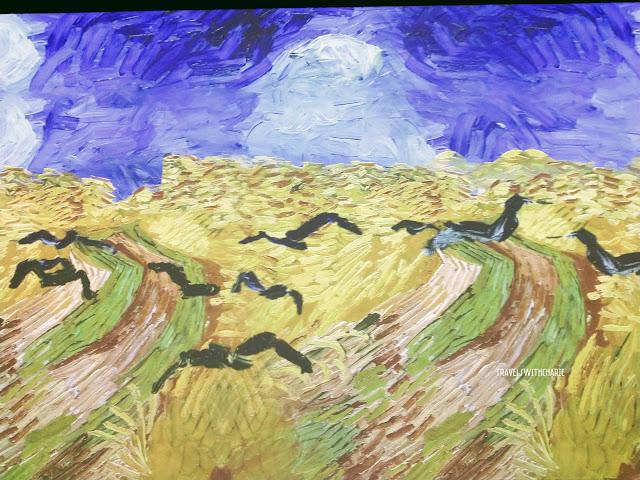Starry Night over the Rhone (1888)
This is a digital experience with Van Gogh's paintings projected and magnified on four walls allowing the viewer to see minute details of his artworks as they move across the surfaces to orchestrated music.
“I don’t know anything with certainty, but seeing the stars makes me dream.” Vincent

The Potato Eaters (1885)
Bridge in the Rain (after Hiroshige), 1887
“My studio’s quite tolerable, mainly because I’ve pinned a set of Japanese prints on the walls that I find very diverting. You know, those little female figures in gardens or on the shore, horsemen, flowers, gnarled thorn branches.” Vincent to his brother, Theo from Antwerp, November 28, 1885
Sunflowers (1888/1889)
The Sower (1888)
Starry Night (1889)
Note: the image above is part of the painting. As the images continuously flow across surfaces, I have to decide to photograph the entire image or just a section of it. I couldn’t really do justice to the paintings presented as I only had my phone camera.
“I often think that the night is more alive and more richly colored than the day”. Vincent
Saint Paul Asylum in Saint Remy
“I put my heart and soul into my work, and I have lost my mind in the process.” Vincent
Wheatfield with crows (1890)
The Church at Auvers (1890)
Vincent and his brother, Theo, who supported him financially until his death, are both buried at the cemetery behind this church at Auvers sur Oise in France.
Self portraits and portrait of Eugene Boch (center left)
Note: self portrait with bandaged ear after he cut his ear off
“I can’t change the fact that my paintings don’t sell. But the time will come when people will recognize that they are worth more than the value of the paints used in the picture.”
Immersive Van Gogh Exhibit
The Shops at Crystals
3720 S. Las Vegas Blvd.
Las Vegas, NV
We bought our discounted tickets from vegas.com and saved a lot. Each ticket included a poster and a cushion to sit on. (Cushion has to be returned after show.) Wheelchairs are allowed inside the venue. They also have wheelchairs you can borrow for the duration of the show.
*****
Images by TravelswithCharie









